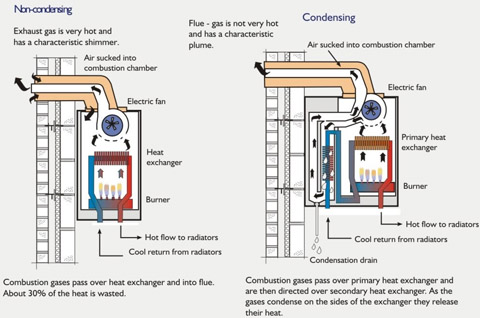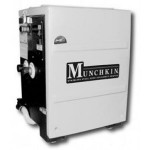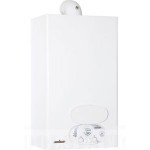Gas Boiler Diagram: the Basics Everyone Should Know
What is a gas boiler diagram? This is a diagram that illustrates the way a boiler works. It is part of the instruction that should always be provided by the manufacturer of the appliance you are about to buy. Let’s view the scheme and find out more about how condensing and non-condensing units operate.
A standard gas-fired appliance burns natural gas to heat up liquid and satisfy one’s hot water needs. When natural gas is burned, there is a chemical reaction, during which two by-products are produced:
- carbon dioxide
- water vapor
Today they are referred to as warm waste gases that travel through a flue and then escape into the atmosphere.
If we speak about a condensing boiler, it should be mentioned that it works using the latent heat of water, produced after the fuel is burned. This helps to increase the effectiveness. The unit uses vapor in the burning up of the fuel and also extracts additional heat, condensing the vapor to water in order to recover the latent heat.
Such units are primarily used for central domestic heating systems and are able to cover the heat that is normally lost from waste gases that are given off.
These gases travel through a heat exchanger that cools and then condenses them into liquid, which is referred to as condensate. This is how it can easily cover some heat, which could be lost. The recovered heat is used for warming up the cool water, which returns from radiators, entering the boiler. A good unit achieves a great level of energy efficiency that equals 90%. The shown gas boiler diagram is only a simplified version of what is really happening inside a unit. Most manufacturers always provide rather detailed diagrams for the boilers they produce. They help inexperienced users to know more about the way their units work.

Normally, such boilers are always suitable for being used during the replacement of existing gas units. Today there are many floor-standing or wall-hung appliances, which are available with extended fluing options, when required.
Perhaps, one of the major efficiency benefits of this unit is the fact it has a pretty large heat exchanger. Large radiators make it possible to lower return temperatures, pushing efficiency higher. An additional benefit is the fact the boiler is cost effective, as the system is considerably under-loaded for the major part of the heating season.
Today such boilers become more and more popular due to the great savings they ensure. However, many people state they are prone to major breakdowns. That really depends on the manufacturer, venting and maintenance. Such models are more expensive to buy, but still there are many grants available, which can help to cut down expenses.
Gas boiler diagrams can help to find out how the boiler works and whether it suits your needs for heating and hot water. Today they’ve become indispensable during installation of any gas unit. Before buying, make sure the manufacturer has provided you with one.
- popular
- new






